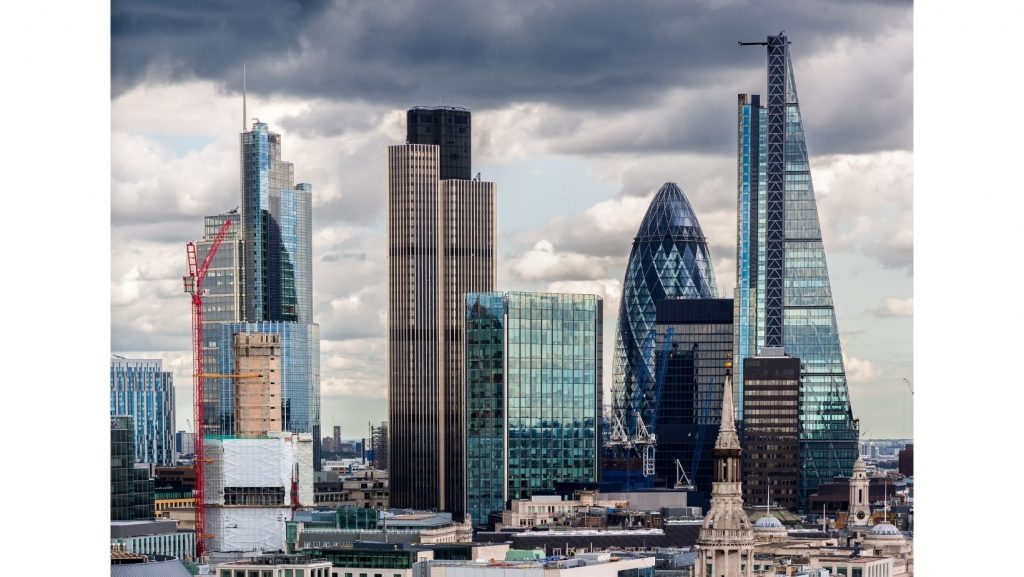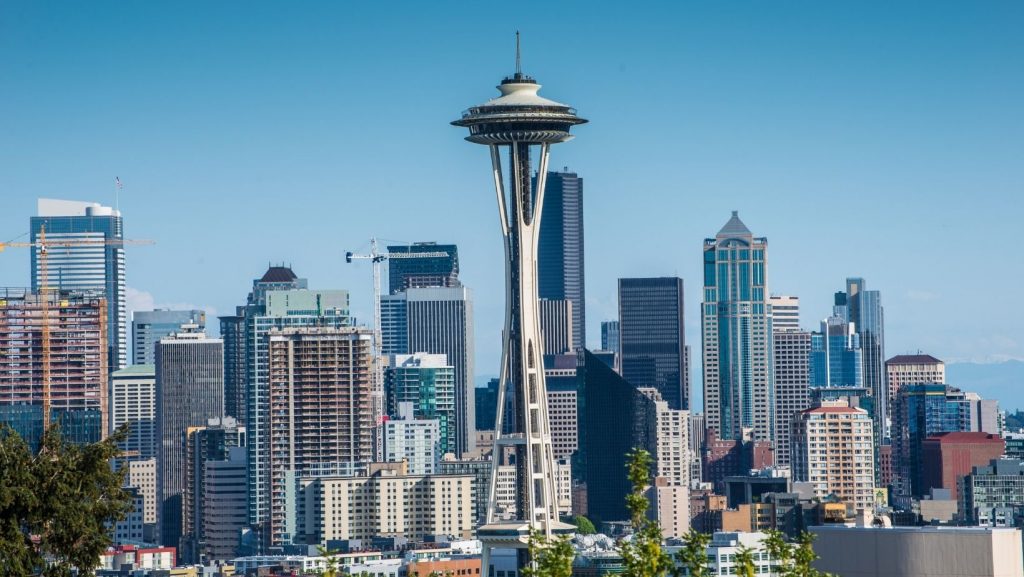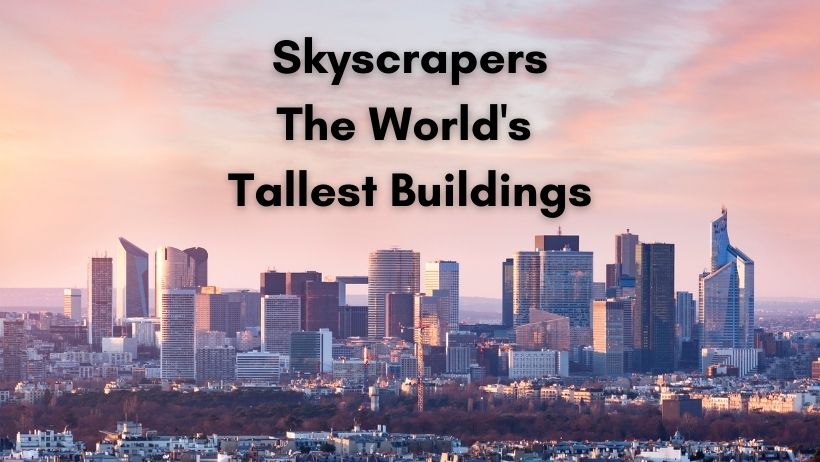
Skyscrapers is a term that was coined in the late 1800’s in reference to the tall buildings being constructed in the United States that “scraped the sky.” These manmade wonders are a phenomenal feat of engineering that need to consider everything from soil density to the weather in order to stay upright. Use our free skyscraper unit study to earn your Skyscraper badge. Other badges you may wish to earn alongside might be the Physics badge or the Home Construction badge.
Skyscraper Design
Just because a building is tall, does not mean it needs to be boring. While some look like simple cement blocks, others are wonders of architectural design.
To Do: Look at a variety of pictures of famous skyscrapers around the world, then design a skyscraper of your own.
Architectural Digest has a post with images of “The 27 Most Beautiful Skyscrapers in the World.” It includes buildings such as the Transamerica Pyramid, Marina Bay Sands Hotel, Shanghai World Finance Center and more.
Fulfills preschool requirement #2

History of Skyscrapers
While towers and tall pyramids have been around for thousands of years, the modern skyscraper is a fairly new invention. According to HistoryofSkyscrapers.com, “The early skyscrapers were a tall, commercial buildings built between 1884 and 1939, mainly in the American cities of New York and Chicago. They had iron or steel internal structure to bear the building’s weight and elevators as to ease the access to higher floors.” There is debate regarding which building should actually be considered the “first” skyscraper, but this website has a list of the earliest ones.
Many skyscrapers were built in order to lower the cost of housing and office space so that more people could live and work in the city. The Visual Capitalist has a great timeline chart of skyscrapers from the last 20 years.
To Do: Create a timeline of skyscrapers by printing out a picture of each one and pasting them in the order they were built.
Fulfills Level 2 requirement #2

Famous Skyscrapers
While there are thousands of skyscrapers around the world, some have become famous for one reason or another. Some are famous for setting record heights, others are famous for their unique design, and still others may be famous for their state of the art construction.
To Do: Learn about a famous skyscraper of your choice. It can be famous for being the biggest, tallest, widest, etc. or because it was designed by a famous architect or designer. Where is it? When was it built? What was the original purpose of the building? Locate it on a map.
Fulfills Level 1 requirement #2

How Skyscrapers Impact the Environment
Skyscrapers are huge towering buildings that can have adverse effects on the environment surrounding them. Before construction can begin, an environmental impact statement is written. An environmental impact statement (EIS) outlines the consequences a project will have on the surrounding environment and discusses both the positive and negative effects for the environment. Solutions to mitigate any negative effects of the proposed project should also be included. For example, in Singapore, one of the most built-up cities in the world, there is little wildlife left so they need to protect it. To help solve the problem, The Oasia Hotel Downtown is covered in 21 species of vines and flowers, creating a home for birds and animals.
To Do: Pretend someone is going to build a giant skyscraper somewhere in your town. Write a sample environmental impact statement showing what issues would need to be addressed before work could begin. For each adverse effect of the building, try to find a solution that would help solve it. Questions to ask yourself might include
- What animals would be effected and why?
- What plants or trees would be effected and why?
- How would the building change the way the wind blows?
- How would the building change light in the area?
- Are there items of historic or cultural importance that will be destroyed?
- How will the building deal with water runoff, trash and pollution?
- What will the building be made of? Is it a sustainable resource?
- How will this building effect traffic in the area and wear and tear on roads?
Fulfills optional requirement #10

Safety Concerns
In order to build buildings that “scrape the sky”, architects must consider a large number of safety variables. How will the building react to wind, fire, earthquake, storms, etc. If the building is near the ocean or wetlands, how will it keep from sinking? What should it be made of?
To Do: Play the Skyscraper Challenge from PBS. “Monday mornings at Ace Forensic Engineering Lab are always busy. Today is no exception. Your desk is swamped with letters, faxes, and e-mails about skyscraper emergencies that happened over the weekend. It’s your job to investigate these troubled buildings and figure out how to fix them … fast! You’ll need to investigate three buildings in three major cities before the end of the week. Click on one of these three locations to get started. Good luck!”
Fulfills Level 1 requirement #1 and Level 4 requirement #2etc.

Building Materials
Skyscrapers are made from a wide variety of materials. These include steel, concrete, glass, etc. The materials chose affect the stability and flexibility of the building as well as the light, colors, and design. In many cases the materials for a building have to be shipped all the way from another country.
To Do: Choose one material used in a famous skyscraper and find out where the material came from. How is it processed? How is it transported? Why does it make a good building material for this type of structure?
To Do: Experiment with making your own mini skyscraper out of household items. How can you make it stronger and more stable? How can you make the design more appealing while retaining the function? For example, if you make a toothpick building, try adjusting the number of toothpicks used. Adjust how they are arranged or what you use to glue them together and see what makes a better tower. Make at least three different towers with this experiment using different types of materials such as playing cards, building blocks, and toothpicks. Which material made the strongest and most stable structure? Which made the nicest looking? Hand On As We Grow has a great article with 25 Ways to Build Towers Without Blocks. Discuss the pros and cons of each material you used.
Fulfills optional requirement #13
Follow our Facebook page for badge of the week posts and other resources. For planning purposes you can see which badges will be featured on our badge of the week calendar. You can also sort and search articles by topic on our main blog page. If you are not already a member, check out our membership pricing page.





